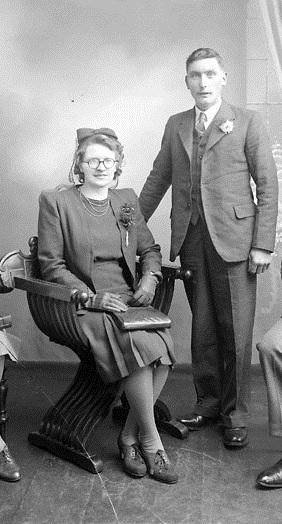|
The Clothes in Books blog is featured in the Guardian books podcast this week, and is described by the books editor there as 'a delight'. The discussion covers fashion/lit issues, including Bret Easton Ellis, Waugh, Dickens and Mitford.
The blog entries discussed in the podcast include those for Don’t Look Now, David Copperfield, Brideshead Revisited, Romance & Love in a Cold Climate, Cold Comfort Farm, and Rules of Civility.
|
observations: I’m still pushing my way through a selection of works by Monica Dickens – goodness she wrote a lot – and there is plenty to interest the dedicated reader. She will never be my favourite writer, and occasionally it astonishes me that she ever got published - this one is typical in being a touch tiresome in places, but fun as a period piece.
Tomboy-ish Violet, daughter of the family at the centre of the book, is marrying Fred, who is just a tenant farmer and so very low-rent. (The key family are dreadful snobs, though they pretend not to be.) However as she is ugly, dresses badly (she once had a perm but it made her look like Douglas Byng) and likes being outside all the time, the family agrees to the match to get her off their hands. You have to admire Dickens in one way – she can’t even let Violet look nice on her wedding day. I feel most writers would have allowed love to give her some shine. There was still rationing in 1946, and Violet:
spent all her coupons on a new riding-coat and a pair of boots [and wanted to go] to the church on horseback and [come] out under an archway of riding-crops and hoes.In a touch that made me think of Nessa from Gavin and Stacey, her brother Oliver complains: ‘she’s fused my electric razor, doing the hairs at the back of her neck.’
Oliver is bed-ridden because of war injuries, with a usefully vague diagnosis – we are building up quite a repertoire of them on Clothes in Books – and all the other characters revolve round him as he lies in bed, watches them, tries to solve their problems, and wonders about his lovely nurse Elizabeth. His omniscience can sometimes be surprising:
His mother was wearing her second-best corsets, Oliver noticed. She really should have worn her best under that grey jersey suit.Links on the blog: Oliver’s sister Heather gets a blue embroidered evening coat in the book, reminiscent of this one from a previous entry:
The top photo, of a wedding in the 1940s, came from the Public Record Office of Northern Ireland.


Moira - Just from the bit you've shared, it sounds as though her work is more enjoyable as a 'period piece' than as an actual novel one can dive into. I love the description of that dress and coat though.
ReplyDeleteEven an imperfect novel from the past tends to have fascinating contemporary details, doesn't it? The kind of thing that even the best-researched modern novelist won't have thought of. And of course the clothes are always good...
DeleteEven before I scrolled down to the bottom of the post, I thought the photo reminded me of some I've seen of my mum's parents - Dublin early 40's. There's almost a hint of a smile there, which makes me wonder at what point did people relax in front of a cameras and stop looking so stern?
ReplyDeleteI think Irish people having civil ceremonies are looking guilty because they know they should be with the mother church!
Delete